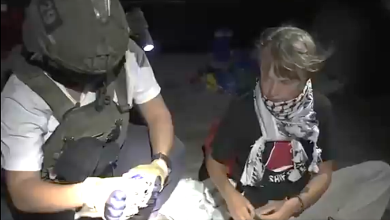More data, comms, countermeasures needed for Special Ops aircraft

TAMPA, Fla. – Special operators are looking to industry for a suite of upgrades to their fixed-wing aircraft, such as radio frequency countermeasures, new methods for aerial refueling and improved networking.
At the annual Global SOF Foundation Special Operations Forces Week, Special Operations Command officials who develop aircraft shared these and other updates that are needed from its largest to smallest platforms.
For one key platform program, the MC-130J Combat Talon III, operators envision the aircraft as a nexus in the battlefield, connecting the lowest-level operator on the ground with space, air and even commands in the homeland.
To do that, the MC-130J will need some new capabilities. They are currently testing terrain following and avoidance technology that includes dynamic retasking.
They’ll also need networked data from the aircraft systems to work with satellite communications, radio signals, data links and data fusion across multiple platforms.
On the opposite end of the spectrum, the aircraft requires upgraded radio frequency countermeasures and considerably more processing power for all of the data streaming in.
Next steps include a capability release that will include tactical mission route replanner technology, along with tactical flight management and defensive countermeasures, as well as embedded training systems to simulate more complex missions.
Beyond those capabilities, operators are looking to extend the range and reach of the aircraft, improve its communication systems, advance its defensive systems, increase its payload capacity for diverse mission sets and precision airdrop and landing capabilities, said Lt. Col. Andrew Sturgeon, head of mobility for Program Executive Office-Fixed Wing.
The recently named OA-1K Skyraider II is also on the upgrade list, as SOCOM wants modular sensor payloads and weapons enhancements for the propeller-driven airplane, said Lt. Col. Shawna Matthys, who heads the integrated strike program.
For both the Skyraider and the AC-130J Ghostrider, officials are looking for longer-ranging weapons systems for contested environments, air-launched loiter munitions and collaborative weapons options, Matthys said.
Across the entire strike portfolio, which touches nearly every fixed-wing platform, Matthys said those munitions need increased automation and autonomy, advanced navigation and sensing and secure, resilient communications, along with modular payload effects.
That gives operators more options for targeting and destroying targets on various missions.
For its drones, such as the MQ-9A and the MQ-1C, special operators seek hardened data links and communications, “easily adaptable autonomous behavior profiles,” the use of artificial intelligence and machine learning to reduce data link bandwidth requirements and the use of autonomy for the entire kill chain, said Brandi Evans, head of airborne Intelligence, Surveillance and Reconnaissance for PEO-Fixed Wing.
Beginning this month, the office’s adaptive airborne enterprise program will look to give operators multi-aircraft control interface software, increase survivability and integrate autonomy onto existing systems, Evans said.
For manned ISR platforms, such as the U-28 and DHC-8 (STAMP), officials are looking to improve sensors, integrate all-weather capabilities and automate aspects of aircraft operation to reduce crew workload, as well as edge data processing.
Todd South has written about crime, courts, government and the military for multiple publications since 2004 and was named a 2014 Pulitzer finalist for a co-written project on witness intimidation. Todd is a Marine veteran of the Iraq War.







